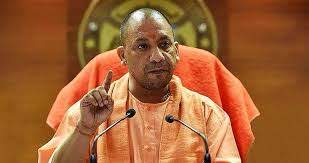Feature
Maoists with spiked currency arrested in Jharkhand
Ranchi: Five Maoists were arrested in Jharkhand on Tuesday with Rs 31.53 lakh in demonetised notes, police said. Mithilesh Mandal, alias Gagdish, zonal committee member of Communist Party of India-Maoist was arrested with Rs 31 lakh in Dumka district, the police said.
Mandal was planning to get the cash deposited in a bank. Four other Maoists, who were with Mandal, were also arrested. Police seized Rs 53,500 from them others. Two pistols, live cartridges, one vehicle, five bank accounts in which money was to be deposited, seven mobile phones were also seized.
A total of Rs 3 crore have been seized in Jharkhand post the demonetisation by the Centre. Maoists are using their network to deposit levy money in banks. In Jharkhand Maoists collect Rs 150 crore to Rs 200 crore in the form of levy. On November 15, Maoists killed a nursing home owner in Jharkhand’s Serikela-Kharsawa district after he refused to deposit “black money” in bank.
On November 10, police arrested Nand Kishore, a petrol pump owner from Bero on the outskirts of Ranchi. He was carrying Rs 25 lakh cash, that he was going to deposit in bank. During interrogation, Kishore admitted that the money belonged to the banned Maoist organization, People’s Liberation Front of India (PLFI) supremo, Dinesh Gope.
Kishore was to deposit the money in his account in the name of petrol and diesel sales. After the demonetisation of Rs 500 and Rs 1,000 notes on November 8, Maoists were using their white-collared network to turn their black money into white, the police officer said.
Police sources say that contractors, petrol pump owners, mining area contractors, officials, and leaders falling in Maoist bastion areas were put under close watch.
Entertainment
Meghalaya Reserves Legalized Gambling and Sports Betting for Tourists

The State Scores Extra High on Gaming-Friendly Industry Index
Meghalaya scored 92.85 out of 100 possible points in a Gaming Industry Index and proved to be India’s most gaming-friendly state following its recent profound legislation changes over the field allowing land-based and online gaming, including games of chance, under a licensing regime.
The index by the UK India Business Council (UKIBC) uses a scale of 0 to 100 to measure the level of legalisation on gambling and betting achieved by a state based on the scores over a set of seven different games – lottery, horse racing, betting on sports, poker, rummy, casino and fantasy sports
Starting from February last year, Meghalaya became the third state in India’s northeast to legalise gambling and betting after Sikkim and Nagaland. After consultations with the UKIBC, the state proceeded with the adoption of the Meghalaya Regulation of Gaming Act, 2021 and the nullification of the Meghalaya Prevention of Gambling Act, 1970. Subsequently in December, the Meghalaya Regulation of Gaming Rules, 2021 were notified and came into force.
All for the Tourists
The move to legalise and license various forms of offline and online betting and gambling in Meghalaya is aimed at boosting tourism and creating jobs, and altogether raising taxation revenues for the northeastern state. At the same time, the opportunities to bet and gamble legally will be reserved only for tourists and visitors.
“We came out with a Gaming Act and subsequently framed the Regulation of Gaming Rules, 2021. The government will accordingly issue licenses to operate games of skill and chance, both online and offline,” said James P. K. Sangma, Meghalaya State Law and Taxation Minister speaking in the capital city of Shillong. “But the legalized gambling and gaming will only be for tourists and not residents of Meghalaya,” he continued.
To be allowed to play, tourists and people visiting the state for work or business purposes will have to prove their non-resident status by presenting appropriate documents, in a process similar to a bank KYC (Know Your Customer) procedure.
Meghalaya Reaches Out to a Vast Market
With 140 millions of people in India estimated to bet regularly on sports, and a total of 370 million desi bettors around prominent sporting events, as per data from one of the latest reports by Esse N Videri, Meghalaya is set to reach out and take a piece of a vast market.
Estimates on the financial value of India’s sports betting market, combined across all types of offline channels and online sports and cricket predictions and betting platforms, speak about amounts between $130 and $150 billion (roughly between ₹9.7 and ₹11.5 lakh crore).
Andhra Pradesh, Telangana and Delhi are shown to deliver the highest number of bettors and Meghalaya can count on substantial tourists flow from their betting circles. The sports betting communities of Karnataka, Maharashtra, Uttar Pradesh and Haryana are also not to be underestimated.
Among the sports, cricket is most popular, registering 68 percent of the total bet count analyzed by Esse N Videri. Football takes second position with 11 percent of the bets, followed by betting on FIFA at 7 percent and on eCricket at 5 percent. The last position in the Top 5 of popular sports for betting in India is taken by tennis with 3 percent of the bet count.
Local Citizens will Still have Their Teer Betting
Meghalaya residents will still be permitted to participate in teer betting over arrow-shooting results. Teer is a traditional method of gambling, somewhat similar to a lottery draw, and held under the rules of the Meghalaya Regulation of the Game of Arrow Shooting and the Sale of Teer Tickets Act, 2018.
Teer includes bettors wagering on the number of arrows that reach the target which is placed about 50 meters away from a team of 20 archers positioned in a semicircle.
The archers shoot volleys of arrows at the target for ten minutes, and players place their bets choosing a number between 0 and 99 trying to guess the last two digits of the number of arrows that successfully pierce the target.
If, for example, the number of hits is 256, anyone who has bet on 56 wins an amount eight times bigger than their wager.






















